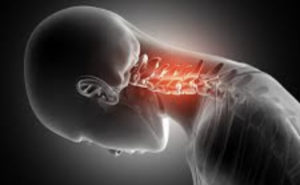
CORE Physical Therapy In Omaha Explains…
By Dr. Mark Rathjen PT DPT CSCS
CORE Physical Therapy Co-owner
17660 Wright St. 9/10
Omaha NE
402-933-4027
Conclusions:
Studies published since January 2000 provide low-moderate quality evidence that various types of manipulation and/or mobilization will reduce pain and improve function for chronic nonspecific neck pain compared to other interventions. It appears that multimodal approaches, in which multiple treatment approaches are integrated, might have the greatest potential impact. ”
What does this mean?
Multi modal approach works well for neck pain, including manual therapy, dry needling and exercise training.
How does this effect my treatment?
A full variety of treatments overall is the most important for meeting your physical therapy goals for neck pain. No one intervention is the best interventions. Its a combination derived from a qualified doctor of physical therapy that makes the real long difference.
How can CORE Physical Therapy Help me?
CORE Physical therapy and sports performance has specialized in treating athletes in the Omaha Metro Area for more than 6 years. In total, the bring more than 25 years of ortho outpatient and sports rehab experience to the table. We target deficits and asymmetries. We normalize tissue and range of motion, and we work to get to a baseline. After we achieve a base, we rebuild and strengthen the structure and strength of the supporting muscles.
At CORE Physical Therapy in Omaha, We specialize in the treatment of athletes. We have worked with athletes for a combined 30 years. CORE was established in 2015 by Dr. Mark and Dr. Claire Rathjen is family owned and operated.
Proud winners of the Omaha Choice awards for 2016, 2017, 2018, 2019, 2020,2021
We are proud to serve the greater Omaha metro area.
For More information, Please feel free to contact us http://coreomaha.com/contact/
Please feel free to follow us at https://www.facebook.com/COREomaha/
To get started http://coreomaha.com/getting-started/
For more Blog information http://coreomaha.com/blog/
Youtube Account linked below.
https://www.youtube.com/channel/UCVg8OSN5h-i1n_ykw1Gvahg?view_as=subscriber
Manipulation and Mobilization for Treating Chronic Nonspecific Neck Pain: A Systematic Review and Meta-Analysis for an Appropriateness Panel
- PMID: 30921975
- PMCID: PMC6800035
Free PMC article
Abstract
Background: Mobilization and manipulation therapies are widely used by patients with chronic nonspecific neck pain; however, questions remain around efficacy, dosing, and safety, as well as how these approaches compare to other therapies.
Objectives: Based on published trials, to determine the efficacy, effectiveness, and safety of various mobilization and manipulation therapies for treatment of chronic nonspecific neck pain.
Study design: A systematic literature review and meta-analysis.
Methods: We identified studies published between January 2000 and September 2017, by searching multiple electronic databases, examining reference lists, and communicating with experts. We selected randomized controlled trials comparing manipulation and/or mobilization therapies to sham, no treatment, each other, and other active therapies, or when combined as multimodal therapeutic approaches. We assessed risk of bias by using the Scottish Intercollegiate Guidelines Network criteria. When possible, we pooled data using random-effects meta-analysis. Grading of Recommendations, Assessment, Development, and Evaluation was applied to determine the confidence in effect estimates. This project was funded by the National Center for Complementary and Integrative Health under award number U19AT007912 and ultimately used to inform an appropriateness panel.
Results: A total of 47 randomized trials (47 unique trials in 53 publications) were included in the systematic review. These studies were rated as having low risk of bias and included a total of 4,460 patients with nonspecific chronic neck pain who were being treated by a practitioner using various types of manipulation and/or mobilization interventions. A total of 37 trials were categorized as unimodal approaches and involved thrust or nonthrust compared with sham, no treatment, or other active comparators. Of these, only 6 trials with similar intervention styles, comparators, and outcome measures/timepoints were pooled for meta-analysis at 1, 3, and 6 months, showing a small effect in favor of thrust plus exercise compared to an exercise regimen alone for a reduction in pain and disability. Multimodal approaches appeared to be effective at reducing pain and improving function from the 10 studies evaluated. Health-related quality of life was seldom reported. Some 22/47 studies did not report or mention adverse events. Of the 25 that did, either no or minor events occurred.
Limitations: The current evidence is heterogeneous, and sample sizes are generally small.
Conclusions: Studies published since January 2000 provide low-moderate quality evidence that various types of manipulation and/or mobilization will reduce pain and improve function for chronic nonspecific neck pain compared to other interventions. It appears that multimodal approaches, in which multiple treatment approaches are integrated, might have the greatest potential impact. The studies comparing to no treatment or sham were mostly testing the effect of a single dose, which may or may not be helpful to inform practice. According to the published trials reviewed, manipulation and mobilization appear safe. However, given the low rate of serious adverse events, other types of studies with much larger sample sizes would be required to fully describe the safety of manipulation and/or mobilization for nonspecific chronic neck pain.
